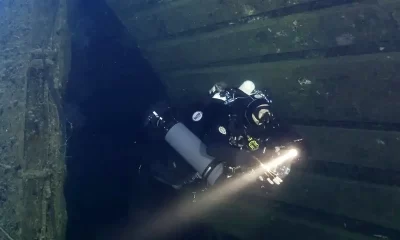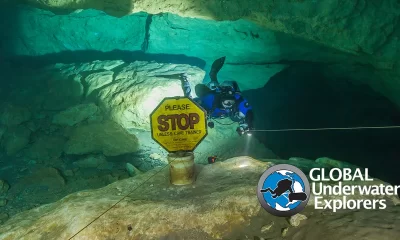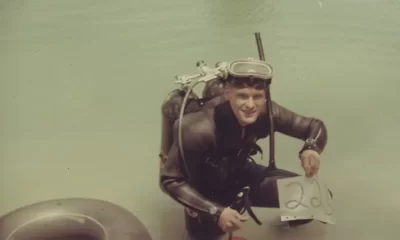Cave
The Challenges of Exploring Hranice Abyss
Extreme depths, varying visibility, acidic water, and an unbreathable surface layer of CO2 gas, make the Czech Republic’s Hranice Abyss—the deepest freshwater sinkhole in the world—a challenge for would-be explorers. Here freelance writer Petra Pruden details the great lengths—err depths—that the Czech Speleological Society “7-02 Hranický kras” has gone to scoop booty.

by Petra Pruden
Header image courtesy of Michal Guba. Remaining images courtesy of 7-02 Hranický kras.
You don’t have to be a technical cave diver to have heard of the cenotes in Mexico, Indian Springs in Florida, or Ben’s Cave in the Bahamas. These spots are popular not only for their incredible dive opportunities, but also as frequented tourist destinations. Yet, as it turns out, some of the most interesting research and technical cave conditions can be found far from the jungle, sandy beaches, and favored hiking paths. The Hranice Abyss located in the Czech Republic is the deepest known underwater cave in the world, and Czech divers like Michal Guba are just barely scratching the surface of its secrets.
Staring Into The Abyss
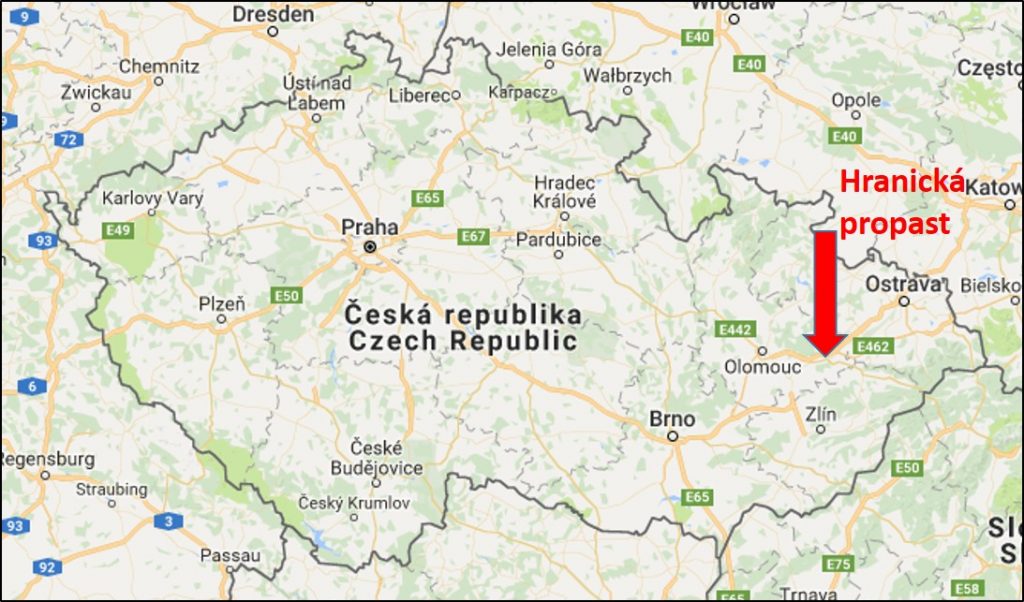
The Hranice Abyss, located in eastern Czech Republic, is the deepest flooded pit cave in the world. The deepest confirmed depth of this karst, recorded in 2016, was 473 m/1543 ft (404 m under the water level), but it’s expected to have a depth well over one kilometre (0.6 miles). The Abyss lies between the junction of two pan-European geological units, namely the Bohemian Massif and the Western Carpathians, and is known for its so-called “gas lakes,” or pockets of carbon dioxide, which have migrated and pooled together in deep underground cavities.
Uncovering an Anomaly
The first recorded mention of the Abyss was in 1580 by a man named Tomáš Jordán who described having seen a water “bubble” which “gave off a foul odour.” (See: Hranice Abyss: The Deepest Flooded Freshwater Abyss in the World) Fast forward several hundred years to the early 1900s, when a number of depth measurements and descriptions of the karst’s chemical phenomena were established. The actual diving survey of the Hranice Abyss began in 1960 and continues to this day. The Czech speleological organization “7-02 Hranický kras” has been continuously working on and monitoring this location for 50 years. One of its members is Michal Guba who has dedicated more than 20 years of his life to technical cave diving, which also includes over five years of cave instruction. Apart from the many years he has spent working on the Czech police force’s special diving unit, Guba is also known for his research at the Hranice Abyss.
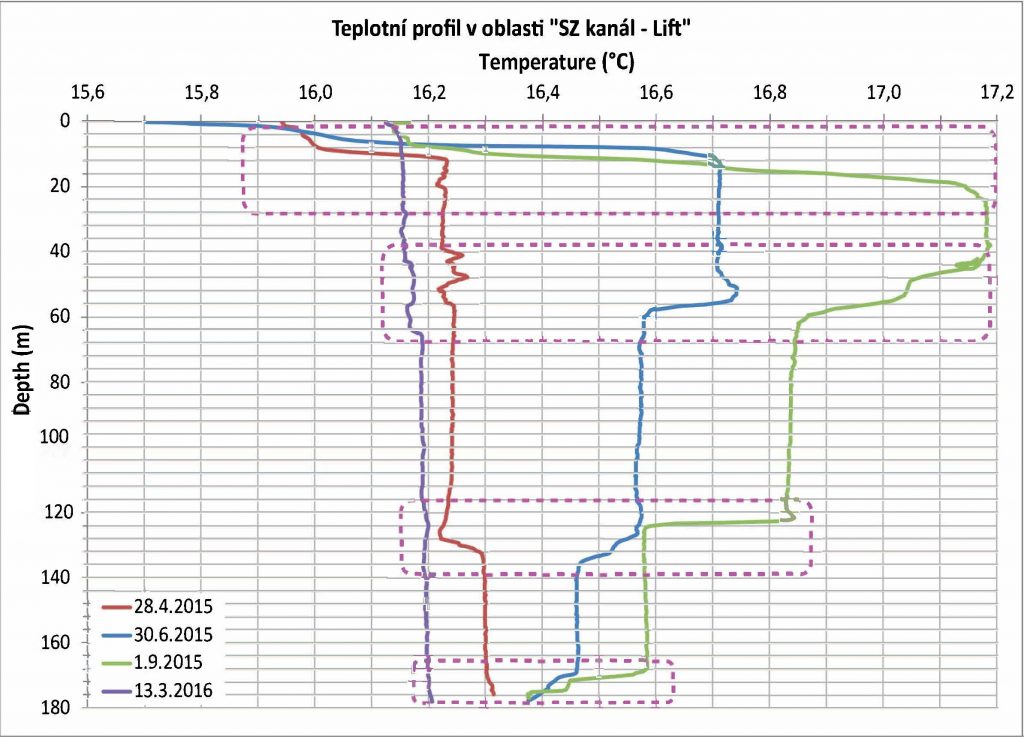
In his own words, Guba’s objective at the site is “to place and maintain monitors in the Abyss’s so-called ‘warm springs,’ which can be found beneath the surface.” These are pockets of mineralized water which have higher temperatures than the surrounding water springs.
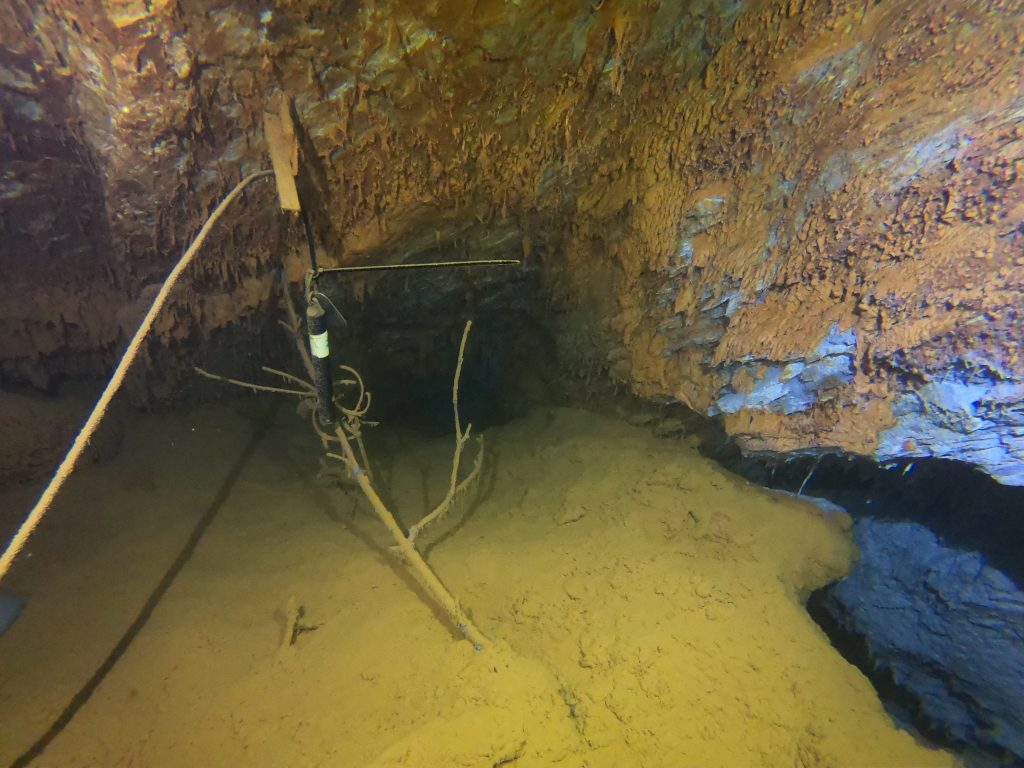
The monitors measure temperatures, conductivity, and pressure levels via two types of sensors. One sensor is located on a cable that runs down through the water (data transfer takes place over the control panel daily) and the other is a series of Water Level Loggers (pressure sensors), from which data is downloaded every 3 months. Guba hopes these research efforts will help us learn more.
Low Visibility, Acid Water and Unbreathable Surface Air
Diving in the Hranice Abyss is no simple feat. Limited visibility is one issue. “I remember a time 20 years ago when I could see through 50 meters of water and as much as another 70 m/230 ft out of the water to the people standing on the railing above the abyss,” Guba lamented. Today it’s no longer that way; though visibility varies it has noticeably deteriorated.

Apart from losing sightlines, divers also have to overcome the water’s conductivity (2000 µS/cm), total mineralization (2.6-2.9 mg/l), and CO2 content (1,500-2,500 mg/l); in other words, divers here are swimming in acid! Guba reported feeling a “stinging” sensation on the parts of his body not covered by his dive suit. And that’s not all! The area one meter above the surface is unbreathable due to the high CO2 content in the air. “It’s something that divers need to remember,” cautions Guba.
As if those weren’t enough variables for divers to take into account at the Hranice Abyss, there are more. Guba cites the challenges presented by numerous rotted tree trunks, logs, and foliage that fall into the water blocking access points or sinking past their sensors, guidelines, and other equipment.
One final challenge, which is quite unique to the Abyss, has to do with the cave’s considerable vertical length. Guba warns, “If a diver suffers any mechanical or other type of failure that results in loss of buoyancy control, they run the risk of sinking deeper into the cave, which drops some 200 meters, and would greatly complicate rescue efforts.”
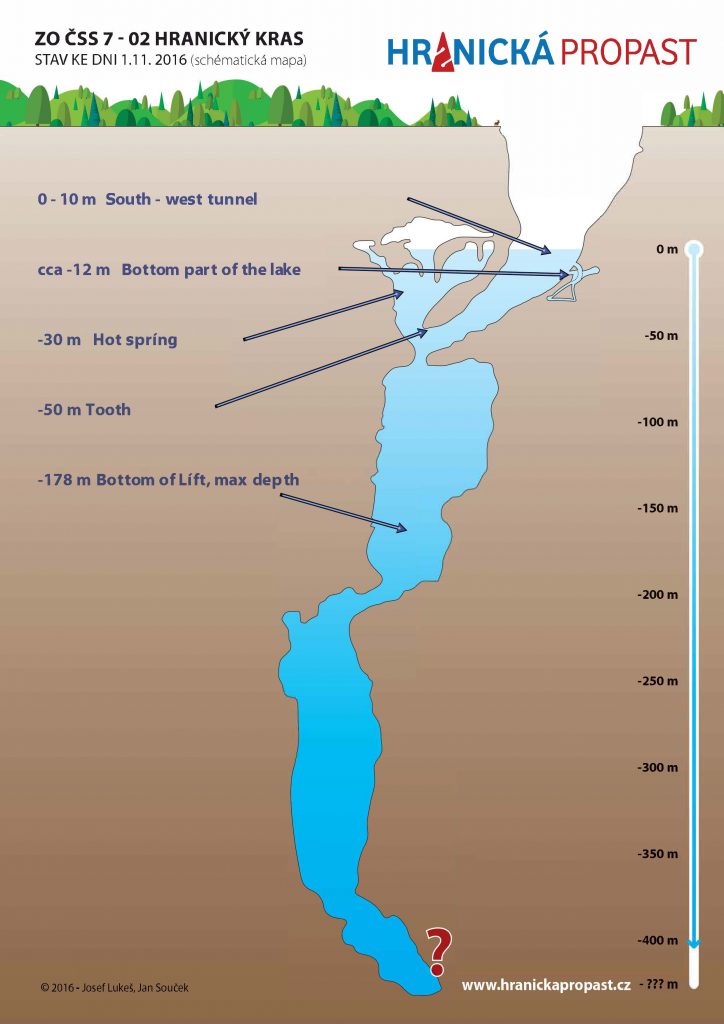
Technology to the Rescue
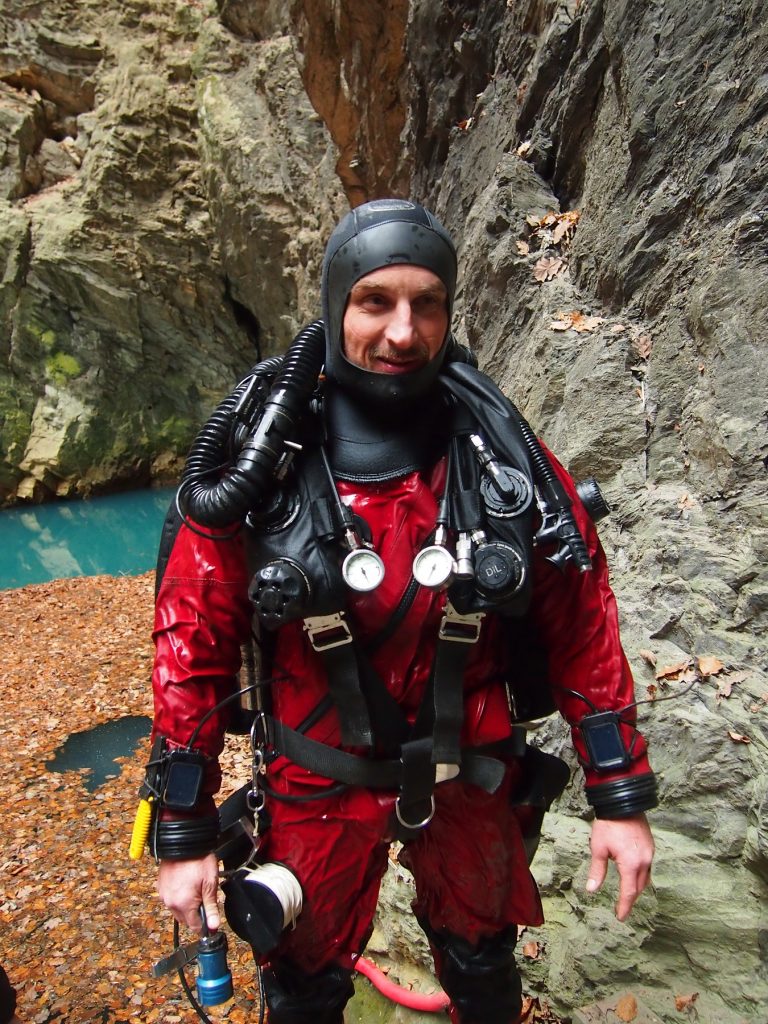
Thankfully, divers have managed to overcome, or at least withstand, these challenging conditions thanks to a catalogue of specific equipment. To lessen the visibility issues which are worsened by exhaled OC mixtures, Guba and his team rely on closed circuit rebreathers. “We use the [Divesoft] Liberty, in both back mount and sidemount configurations. Otherwise, we utilize the typical cave diving gear and technique,” he explained.
Once in the water, divers emerging from deep dives are able to make use of the permanently installed decompression habitat installed at 9 m/30 ft. Note that because of the high dissolved CO2 content in the water, divers must leave on their breathing equipment in the habitat as it quickly becomes unbreathable after it is flushed out with fresh gas. The Abyss also features a fixed permanent line with arrows in several directions for easier travel and positional awareness. Standard mapping techniques and equipment (band and compass) are also used to aid with the poor visibility.
With this equipment in hand, Michal and his team of divers and researchers are able to monitor the Hranice Abyss and it’s “warm spring” activity. Their time spent at the cave is primarily maintaining the lines, decompression tent, and Level Logger sensors, as well as recording data and taking samples. Their research has additionally been incorporated into various scientific works, including the Neuron Expeditions (a Czech-based diving program dedicated to making new dive-related discoveries around the world).
There is also a plan to acquire a Remotely Operated Vehicle (ROV), with an umbilical cable at least 1500 meters in length in order to explore deeper sections of the Hranice Abyss beyond the Mikado restriction at a depth of 200 m/653 ft.
More Cave To Be Explored
Even though diving hundreds of meters down a vertical cave of acid and facing visibility challenges and CO2 clouds is a far way from the warm waters of Mexico’s cenotes, Michal is excited about his work at the Abyss. “You can travel and cave dive all over the world, but nothing beats having the world’s deepest underwater cave right in your backyard,” Guba said.
He also mentioned his hope for the future: that in time, more information and data will be collected about this natural anomaly. With a flooded pit cave of this magnitude, divers truly have no way of discovering everything below. But as technology and equipment improve, who knows what divers like Guba will find. It’s safe to say the Hranice Abyss has yet to show all its cards.
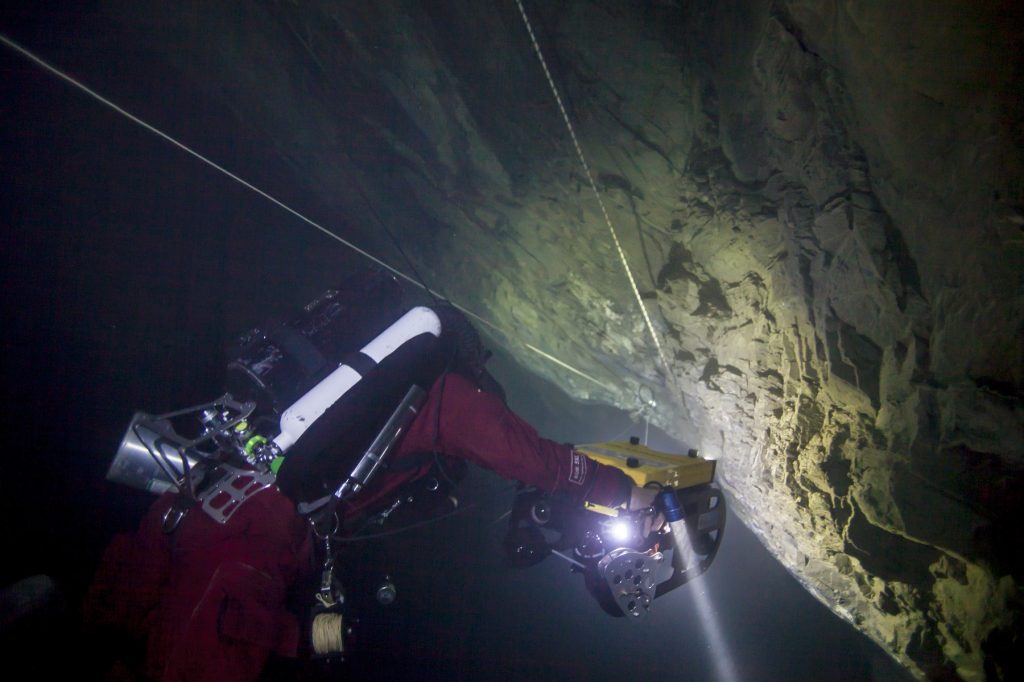
Dive Deeper:
InDepth: Hranice Abyss: The Deepest Flooded Freshwater Abyss in the World
BIP: INESC TEC breaks world depth record in the exploration of flooded caves (2022)
EOS: The Czech Republic’s Hranice Abyss—the world’s deepest freshwater cave—may be twice as deep as thought. Krzysztof Starnawski, where art thou? Err, how deep art thou?

Petra Pruden is a Czech freelance copywriter and editor. She expresses her passion for writing and creative work in the form of articles and interviews with intriguing personalities, who allow her to take a deeper look into the given issue. When not at work, she dedicates her time to marketing, HR, self-development, and the study of the Czech language.




















